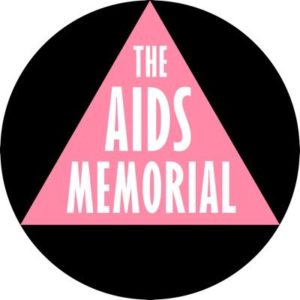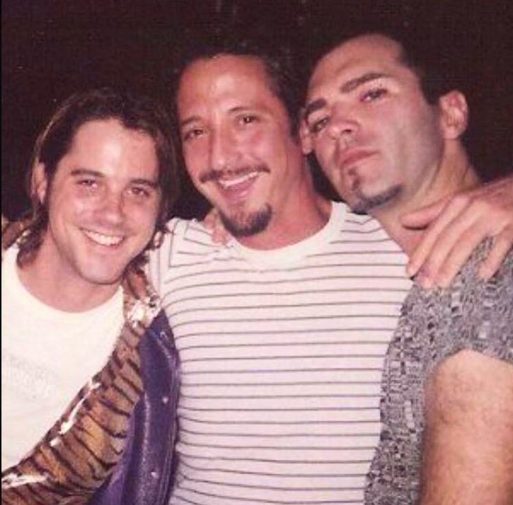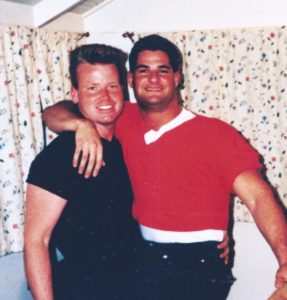There’s an Instagram page dedicated to remembering loved ones who have died of AIDS-related illness. Called “The AIDS Memorial,” the account is a heartbreaking reminder that the HIV/AIDS epidemic still affects millions of people around the world in more ways than one.

Credit: twitter.com
Instagram is the ultra-popular social media platform that people use to upload photos and videos for their “followers” to see. The most-followed celebrities can have tens of millions of followers. The AIDS Memorial currently has roughly 66,100 followers.
The AIDS Memorial has shared 4,505 posts so far. Most of the posts focus on one individual who has died from AIDS-related illness. Each post has an accompanying write-up by someone who was very close with the person who died.
Many of the captions are extensive, oftentimes describing how and when the author met the person who died and describing their relationship. Some write-ups can be as short as a few sentences, while others can take the form of numerous posts, with three or four parts. Each post is heartbreaking in its own way.
You really get the sense of how destructive the HIV/AIDS epidemic was in the 1980s-90s while scrolling through The AIDS Memorial account. Seemingly a majority of the posts are “vintage-looking” in the sense that you can tell they are pictures of photos taken in the 70s, 80s or 90s.

“Jimmy Medina passed away 23 years ago this week. I love this pic of my great love Jimmy Medina and I with the wonderful @cgciccone! You were a true blue friend who showed up for Jimmy and I thru all the horror till the end. I’ll never forget your kindness Christopher.” — by Bryan Rabin @bryanrabin
Credit: instagram.com via The AIDS Memorial
HIV/AIDS doesn’t get the same media attention as it used to during the height of the epidemic in the latter part of the 20th century. This is likely due to increased survival rates in the First World where people have access to medications. The United Nations has an AIDS fact sheet for 2018. According to the sheet, 36.9 million people globally were living with HIV in 2017, and 21.7 million of those had access to antiretroviral therapy.
Never Forgotten
A recent story published by VICE News chronicles one writer’s experience with The AIDS Memorial. “Looking at the photos, I felt like the whole world was falling down around me,” writes Jeff Leavell. “I had an overwhelming feeling of loss and devastation, and had to go to the bathroom so that no one would see me crying.”
He goes on to mention, however, that the photos are all very beautiful, not just heartbreaking. They are wonderful remembrances of people who once lived rich lives, people who laughed and loved.
The AIDS Memorial is a safe place for people to remember their friends and lovers whose lives were cut short by the swift destruction of HIV/AIDS. It is also a reminder that the horror of AIDS caused countless people years of agony and relentless pain.

“My best friend Mark is pictured here in red. My name is Marc. We were known as “Marc and Mark” everywhere we went. This photograph is from one of our trips to the Russian River in 1988. Mark passed in 1995.” — by Marc Heide
Credit: instagram.com via The AIDS Memorial
It still does. However, in First-World nations like the U.S., people who are HIV positive can still live rich and fulfilling lives. Leavell, author of the VICE article, is HIV positive himself. He writes of how becoming HIV positive made him much more aware of his mortality — not that he’d die from AIDS necessarily, but that he would eventually die.
“When those feelings of fear hit me, and they still do,” he writes, “I think of men like Uncle Nick, and of Felix, of Sergio and Mikey, and of Aron, of all the men I have known who died from this disease, and I remember: I am lucky. I am surrounded by love. I am healthy. My life, even at 50, even with HIV, is laid out before me full of possibility…And so I do everything I can to live it as big and full of love as possible. In honor of them. In honor of all those who died.”
The AIDS Memorial is one way we can honor our loved ones who have died. Providing people with a space to share their stories of love and life is a vital way to honor the memory of those whose lives were cut short by a horrific disease.

 Instagram Page “The AIDS Memorial” Remembers People Who Have Died From The Disease
Instagram Page “The AIDS Memorial” Remembers People Who Have Died From The Disease


 “As Tears Go By” by Marianne Faithfull
“As Tears Go By” by Marianne Faithfull
 “The Sea” by John Banville
“The Sea” by John Banville
 Funeral Favors Offer Visitors a Tangible Memento
Funeral Favors Offer Visitors a Tangible Memento















